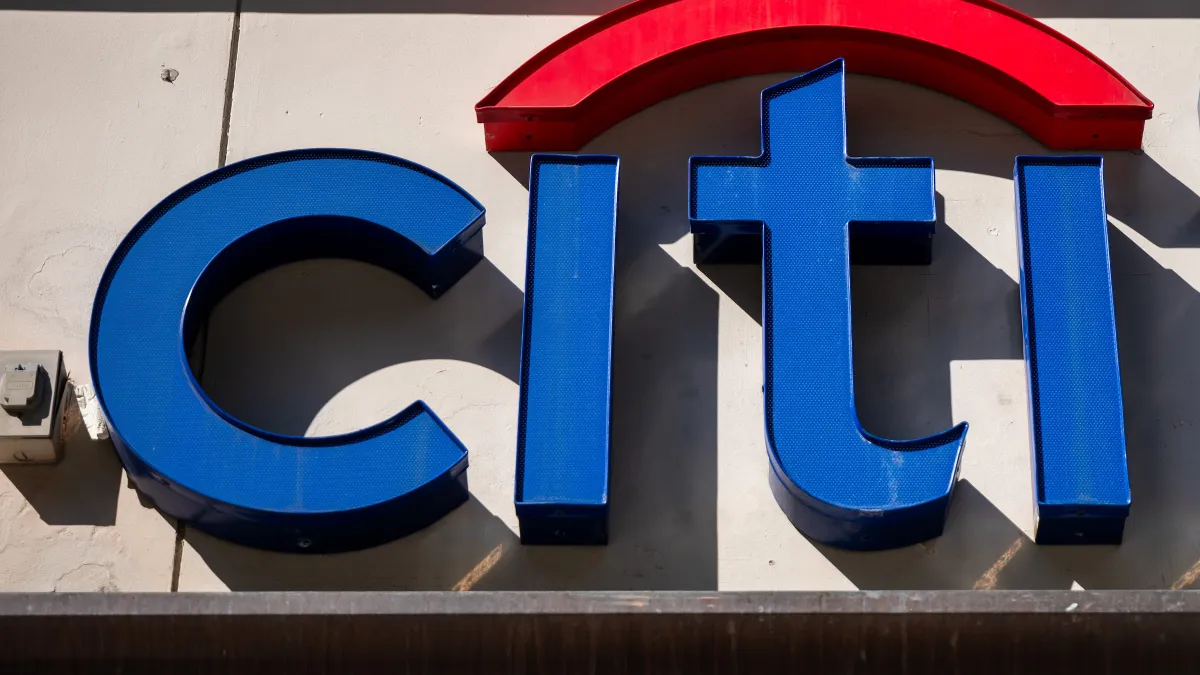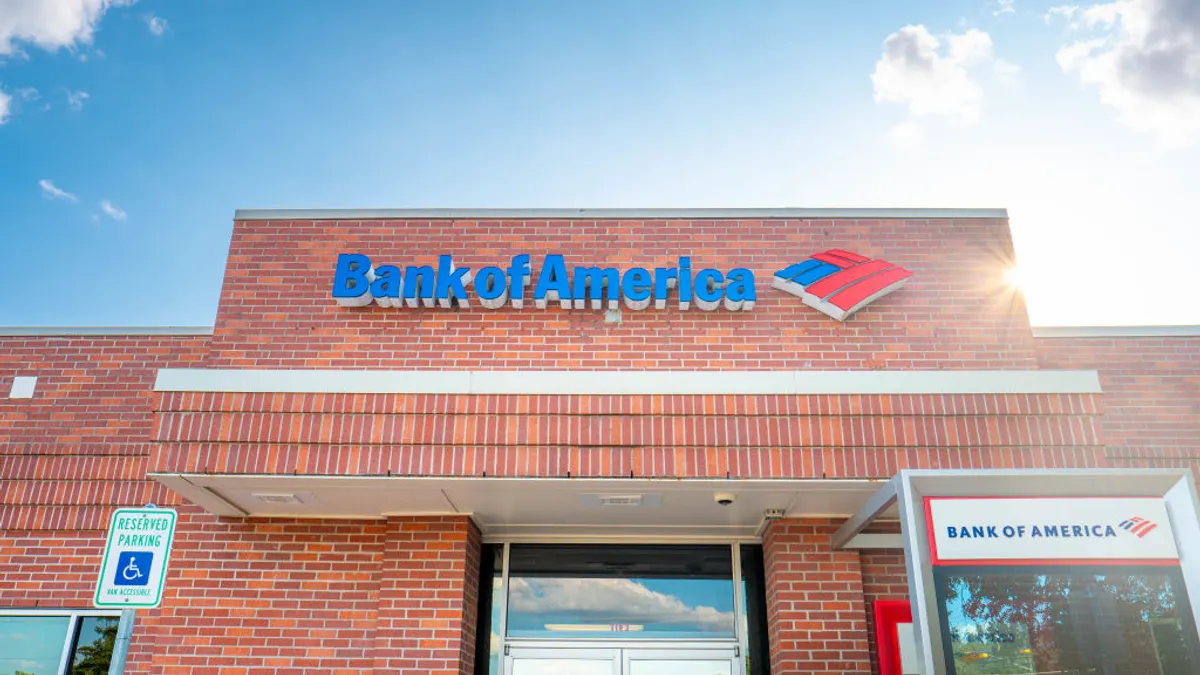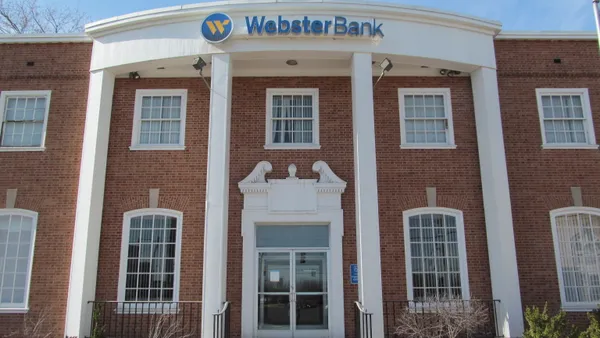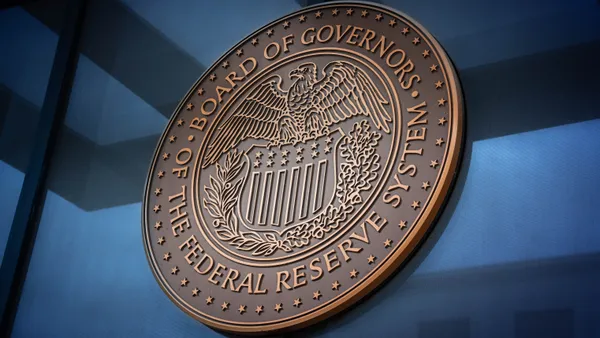As the coronavirus pandemic upends the traditional way many industries have have operated over the years, some banking and fintech leaders say a lasting impact on the banking sector could be the disappearance of branches.
"I think everything that's happened over the last 60 days or so is probably accelerating a trend that’s already happening, which is the reliance on traditional bank branches will continue to go away," Chime CEO Chris Britt said during a webinar hosted by FT Partners.
Britt said the digital bank's more than 8 million customers don't want to go into a bank branch and are comfortable with a mobile-first relationship.
Bank branches in the U.S. have been on the decline in recent years, while digital banks such as Chime —untethered to brick-and-mortar constraints — have emerged.
The number of full-service bank branches across the country declined 12% between 2010 and 2019 — from 95,000 to 83,000, according to a Quartz analysis of Federal Deposit Insurance Corp. data.
As the coronavirus outbreak spurred calls for social distancing, many banks began closing branches in mid-March to protect customers and employees.
Many customers have been forced to turn to digital options for their banking needs because they can't simply walk into a branch.
But the majority of those customers are not missing their trips to the bank, Alex Rampell, general partner at Andreessen Horowitz, told Business Insider.
"Almost nobody is suffering from inability to enter a physical branch," said Rampell, who focuses on financial services investments at the venture capital firm. He added that the coronavirus pandemic represents an "A/B test of branch versus branchless banking."
"It may be more fun to see a movie at a movie theater, but there's nothing necessary or better about doing business at a bank," he said.
Some say the economic impact of the pandemic may force banks to take stock of the physical branch model like never before.
"I can see big branch networks being reduced to help with costs," Steven Page, vice president of IT, marketing and digital banking for SafeAmerica Credit Union, told the Financial Brand.
Drops in revenue could force community banks and credit unions to make decisions they have been avoiding relative to brick and mortar, Market Insights CEO Joe Sullivan said.
"Declining profits will make some bankers finally take notice and take action this time," he told the Financial Brand. Changes could involve eliminating or repurposing branches to something beyond the teller-deposit function, he said.
As the majority of the country completes a second month under stay-at-home orders, Americans are forming habits that could continue once the pandemic is over.
"A lot more people are getting used to transacting remotely," Renaud LaPlanche, co-founder and CEO of Upgrade, told Banking Dive.
Spurred by the crisis, the digital bank recently launched a new contactless card months ahead of schedule.
"In this environment, a lot of us are relearning or getting used to working from home, but also doing a lot of other things from home, like online grocery delivery," LaPlanche said. "People are understanding that they don't really need a branch for a lot of the transactions they want to accomplish. I think it’s probably going to be a long-lasting transformation and really an opportunity for a lot more people to discover or get more familiar with online banking."
Although online banking offers convenience — and during a national crisis, safety — a reduction in bank branches, can have a negative impact on small businesses.
A study by an economist at the University of California, Berkeley, found when merging banks close a branch, the number of small-business loans made in the area fall by 13% for more than eight years afterward.
"There is a very tight relationship between business lending and branch locations," Jason Richardson, director of research at the National Community Reinvestment Coalition, told Banking Dive in February. "Part of that has to do a lot with the way that business lending works, where a lot of it is very relational. Business owners get to know the manager or the business specialist at a local branch."
That in-person interaction between a small-business owner and a banker can be hard to replicate digitally, said James Angel, professor of finance at Georgetown University’s McDonough School of Business.
"One of the big things with small-business credit is the relationship with the banker, where they really understand the person in a way that is much harder to digitize than a generic consumer," he told Banking Dive.













